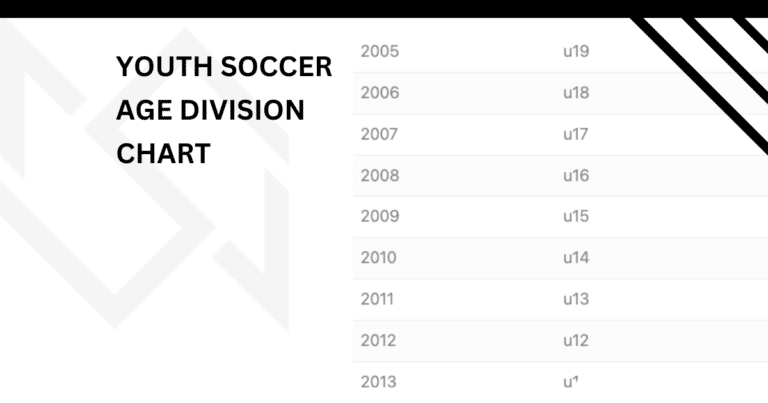What Are the Soccer Overtime Rules?
Soccer overtime rules can be confusing. When you understand it, you’ll realize it’s pretty simple in concept but does have some details that make it unique compared to other sports.
In general, a soccer match will last 90 minutes, split into two halves of 45 minutes each. But sometimes, the 90-minute allocated time is not enough to decide the winner (i.e. – tournaments), which is what makes overtime necessary.
Key Takeaways From This Article:
- Most soccer games do not have an overtime period. However, mostly in tournaments and playoffs, they will have one to help determine a winner.
- Stoppage time differs from overtime (jump to explanation).
- In youth soccer, there is not typically an overtime period. Games will usually just end in a draw (tie).
While you probably get the concept of overtime, you may not be aware of all its rules.
So, whether you want to learn more about how overtime works or you want to prepare for when you’ll play soccer yourself, here is everything you should know about soccer overtime rules.
General Overview of Soccer Overtime Rules

In most sporting events, there needs to be a clear winner. If the game is tied after regulation then the teams will compete in overtime until a winner is determined.
For example, in basketball, if a team hits a buzzer-beater and ties the game up at 67 points with zero seconds left, it does not result in a tie. Instead, it goes into overtime and the team with the higher point total at the end of the overtime will win the game. It continues to repeat if there is a tie at the end of the first overtime.
However, in soccer, a game can end in a tie. This is called a draw. So, in regular season games, if a game ends 2-2, teams congratulate each other and go home.
For soccer matches that need a winner to be determined (i.e. – in the playoffs or tournaments) then the overtime period is implemented.
In this case, two 15-minute overtime halves will be added to crown a winner. A penalty shootout will ensue if it’s still tied at the end of 30 minutes.

In summary, here are the overtime rules you should be aware of:
- The teams are allowed to make substitutions during the extra time.
- There will be a quick half-time between the two overtime periods.
- There are two 15-minute overtime periods.
- Extra-time can be added to each overtime period.
- The team with the most goals at the end of the overtime wins the game.
- Teams alternate the overtime kickoffs and switch sides.
- If there is still a tie at the end of the extra time, an opportunity for a shootout will determine the winner.
Even though many soccer games go into overtime periods, some tournaments will go straight to penalties. This is more common in youth soccer where there is a strict schedule to fit in all the games.
Stoppage and Overtime – What Is the Difference?
There is a difference between stoppage and overtime in soccer.
Overtime includes two separate 15-minute halves. They are played when the match ends in a tie after the regulation time comes to an end.
Stoppage time (or extra time) can be added at the end of each half of the game to provide compensation for all the stoppages taking place during each half.
There are many reasons why stoppages occur – for example, when teams waste time or when substitutions have to be made. The referee is the one deciding on the amount of stoppage time, but the norm is usually between 1 and 4 minutes.
So, stoppage time is added to each half and overtime is added to the end of the game if it is a tie.
Where Does the Idea of Overtime Come From?

Overtime in soccer became a thing back in 1897. However, the system still had its issues, despite the extra time getting accepted.
In case the game ended in a tie, then overtime would be offered, but if no team gained the advantage during the extra time, a simple coin toss would decide the final result of the match. Eeek 😬
A great example of this is the Italy and the Soviet Union match from the semi-finals of the 1968 European Championship. After a coin toss, Italy was able to win. And while Italy also won the tournament in the end, the system was flawed. So, new rules were quickly in the works.
In the past, the overtime they incorporated was very long. Because the winner during the overtime was determined by the team that scored next, there were times when a match would last for more than 3 extra hours.
This was called the “Golden Goal” rule, and it isn’t normally enforced in today’s game.
There was also another rule known as the “Silver Goal”. This means that the team that was in the lead after the first overtime would be the winner.
Similarly to the Golden Goal, the Silver Goal evaporated from determining the winner.
As a result of the professional overtime experiments above, the penalty shootout was introduced in 1970.
Final Thoughts
Thanks for reading this far! As you read, overtime in soccer is pretty straightforward.
I think the current overtime and penalty shootout rules make it more exciting to watch soccer matches. I realize there’s some controversy about the shootouts but how exciting was the 2022 World Cup finals between Argentina and France?
Nonetheless, most soccer games will either end in a clear winner or draw (tie) so overtime won’t come into play but it’s important to understand it, especially during tournament or playoff time!

Written By: Beau Bridges
Beau is the founder of SoccerNovo, dedicated to helping players and parents navigate the youth soccer landscape. As a former youth coach and soccer parent, he shares insights on player development, recruiting, and the ever-evolving soccer scene in the U.S.
Let’s connect





